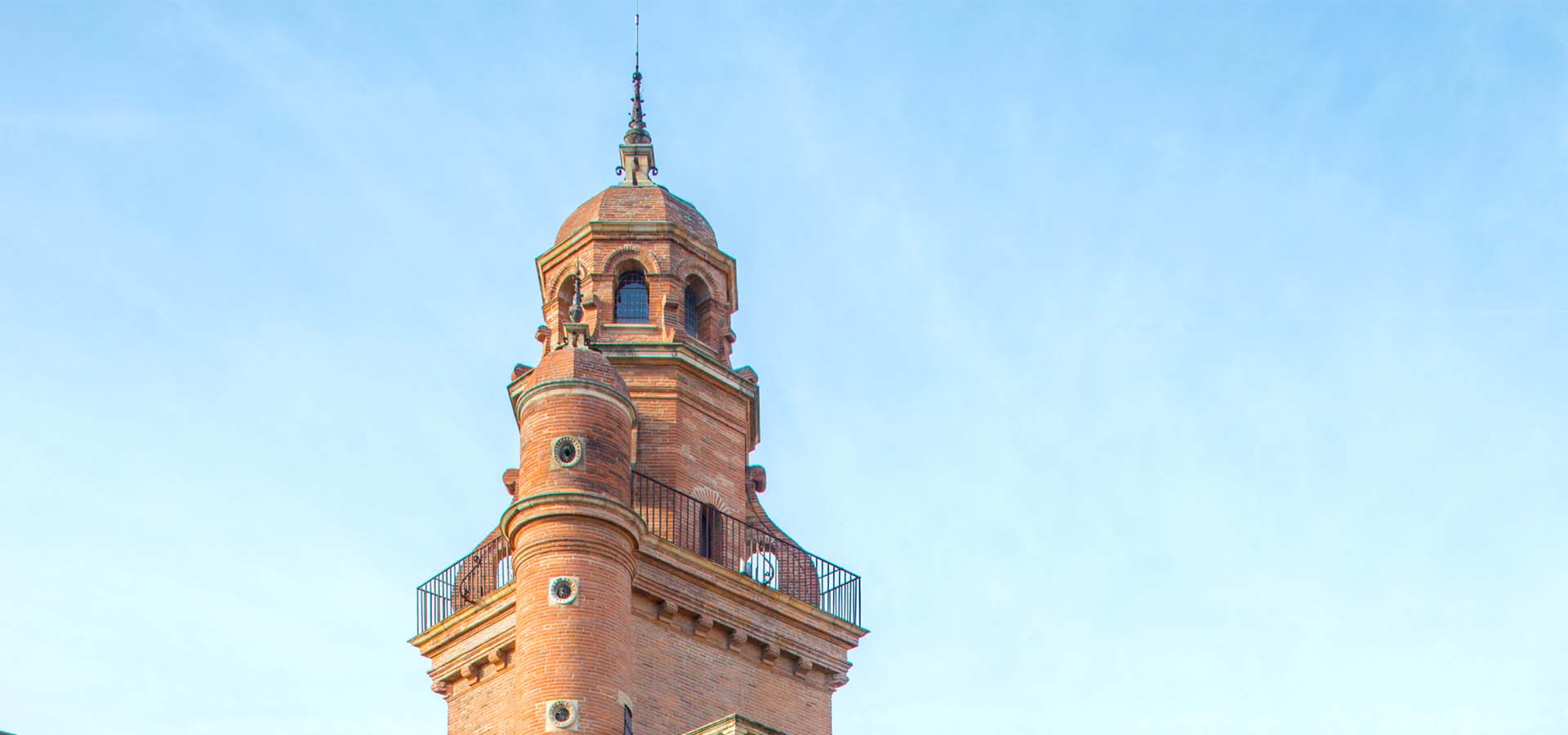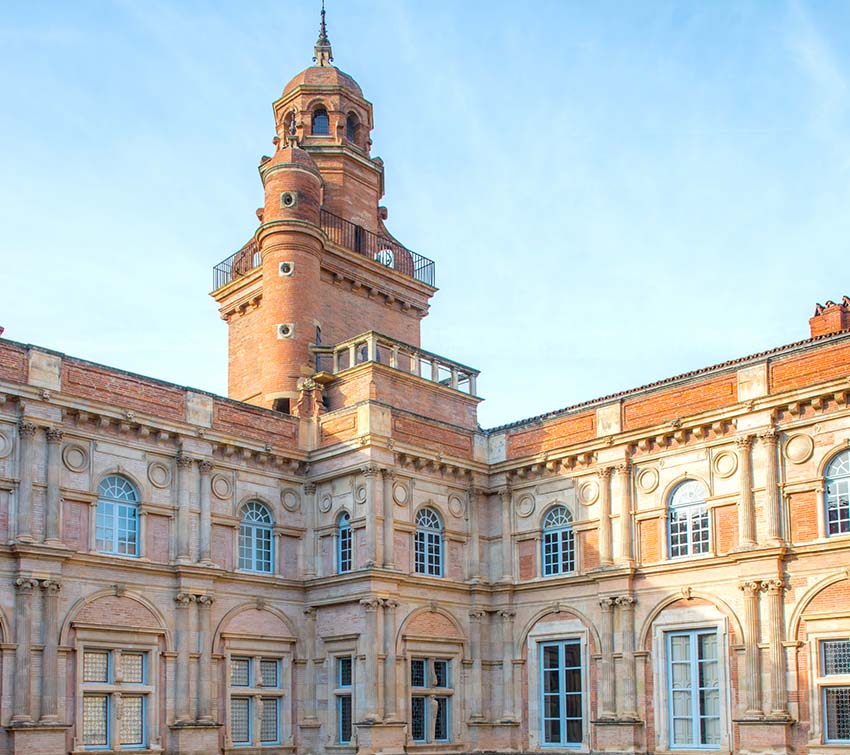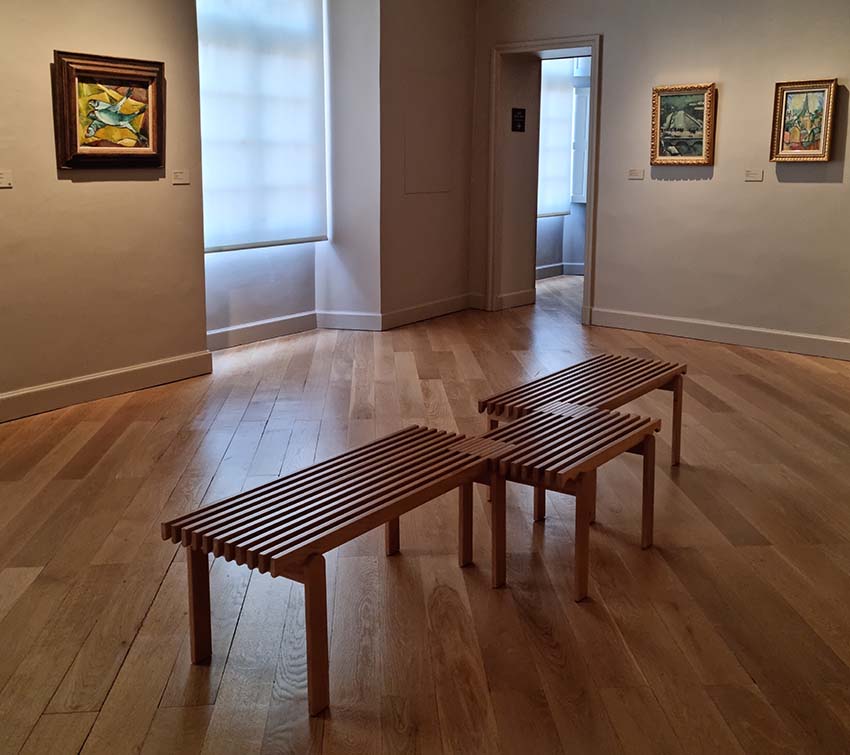
Text by Pierre Léonforte
Fondation Bemberg launches its benches
Toulouse. The Pink City of red bricks where Georges Bemberg decided to set up his foundation, inaugurated in 1995. The head of a South-American industrial empire, born in Argentina in 1915 to a family originally from Cologne, was also a humanist writer-patron and occasional playwright, author of several works published in France, and an enlightened collector who himself liked to say that he bought his first artwork — a gouache by Pissarro — at the age of 18. His trajectory attests to his artistic sensibilities: he studied literature at Harvard; took piano classes by the great Nadia Boulanger; lived in Paris and New York, spending summers in Venice. Over time, he built up an extensive art collection, guided solely by the emotions stirred up in him by a painting, a sculpture, a piece of furniture, a ceramic object… Today the collection covers five centuries of history, amply demonstrates his eclectic and refined tastes and is replete with masterpieces by Cranach, Veronese, Van Dyck, Della Robbia, Renoir, Zurbaran, Van Dongen, Dufy, Braque, Sickert, Maillol and, his favourite, Bonnard. In addition there are several works by Clouet, the artist behind the famous portrait of King Charles IX, which can be seen in all its majesty here. Georges Bemberg died in 2011, without direct heirs, but not before he had created his own foundation where we can today admire the treasures within the venerable grounds of the recently renovated and expanded Hôtel d’Assézat.

Hôtel d'Assézat : an architectural jewel
Before hosting the art collections of Fondation Bemberg, Hôtel d’Assézat had a turbulent history. It was built in a pure Renaissance style of the mid-16th century by the Toulouse-born architect Nicolas Bachelier on the order of Pierre II d’Assézat (1515-1581), who had made his fortune in the production of woad, also called “blue gold” or “dyer’s pastel”, cornerstone of the dye industry in Occitania. Pierre II d’Assézat also served as personal treasurer to Eleonor of Austria, second wife of King François I, then as a capitoul (municipal officer), but his political influence was annihilated by the wars of religion: as a Protestant, he was banned from Toulouse for 10 years, spending his exile in Bordelais until he was granted a pardon in 1572. His mansion was passed down by his descendants for two centuries, before being sold to the Baron of Puymaurin, who renovated it according to the fashions of the time then sold it in 1791 to a company specialised in noble woods and exotic objects.
A century later, in 1895, it passed into the hands of banker-patron Théodore Ozenne who restored it before transferring ownership to the City of Toulouse, which brought under one roof various Learned Societies and Academies hitherto scattered around the city, including the venerable Académie des Jeux Floraux (poetry) founded in…1323! A century later, in 1995, Fondation Bemberg joined the resident Academies. Red bricks and cut stones: the general appearance of Hôtel d’Assézat is a textbook example of the Renaissance style. The building, which is of course listed, recently underwent a technical and museographic renovation under the joint direction of architect Philippe Pumain and Jean-Louis Ribière, Chief Architect of Monuments Historiques. After three years of closure, the building opened once again to the public a few months ago, heralding a new museum experience with new exhibition spaces under the direction of Ana Debenedetti, Director of the foundation since July 2022.

A Collection of collections
Inaugurated in 1995, Fondation Bemberg reveals its treasures, which have grown over time with bequests and donations, as the proud owner of a private collection would. There are no longer reproductions hung in accordance with now-obsolete rules. In with the new! A new palette of plain colours for walls, new display cases, a new configuration of objects exhibited according to the original hierarchy: paintings from the end of the 15th century to the July Monarchy on the first floor; modern and avant-garde paintings on the second floor with thirty works by Bonnard. In addition to these two “eras” there are also other noteworthy collections: French and Italian art of the 16th century; furniture from the Renaissance to the 18th century; and sculptures in terra cotta and bronze. Moreover the collections have continued to grow via the acquisitions policy implemented by the President of the foundation Alfred Pacquement and the new Director Ana Debenedetti. The latter has a passionate interest in the Italian Renaissance and has previously worked at Victoria & Albert Museum in London, Musée Jacquemart-André in Paris and Hôtel Caumont in Aix-en-Provence. Under her tutelage, Fondation Bemberg also organises temporary exhibitions in the three rooms fitted out for this purpose on the ground floor and basement of Hôtel d’Assézat. Don’t miss the photography exhibition suggestively titled “Les paradis latins : étoiles sud-américaines”, ending November 24.
The internationally renowned design school ÉCAL in Lausanne, Switzerland, has a track record of launching initiatives and competitions. Case in point: the design competition organised for Musée National Picasso–Paris with the aim of developing new seating for the visiting public. The winner was Isabelle Baudraz with Muse, a modular, stackable oak bench produced in 2017 by Tectona. Since its reopening, visitors at Fondation Bemberg can break up their visits by enjoying the Muse benches. Ana Debenedetti spotted the model in the Tectona store. “It’s only later that I saw it at the Musée Picasso in Paris!” she adds.
